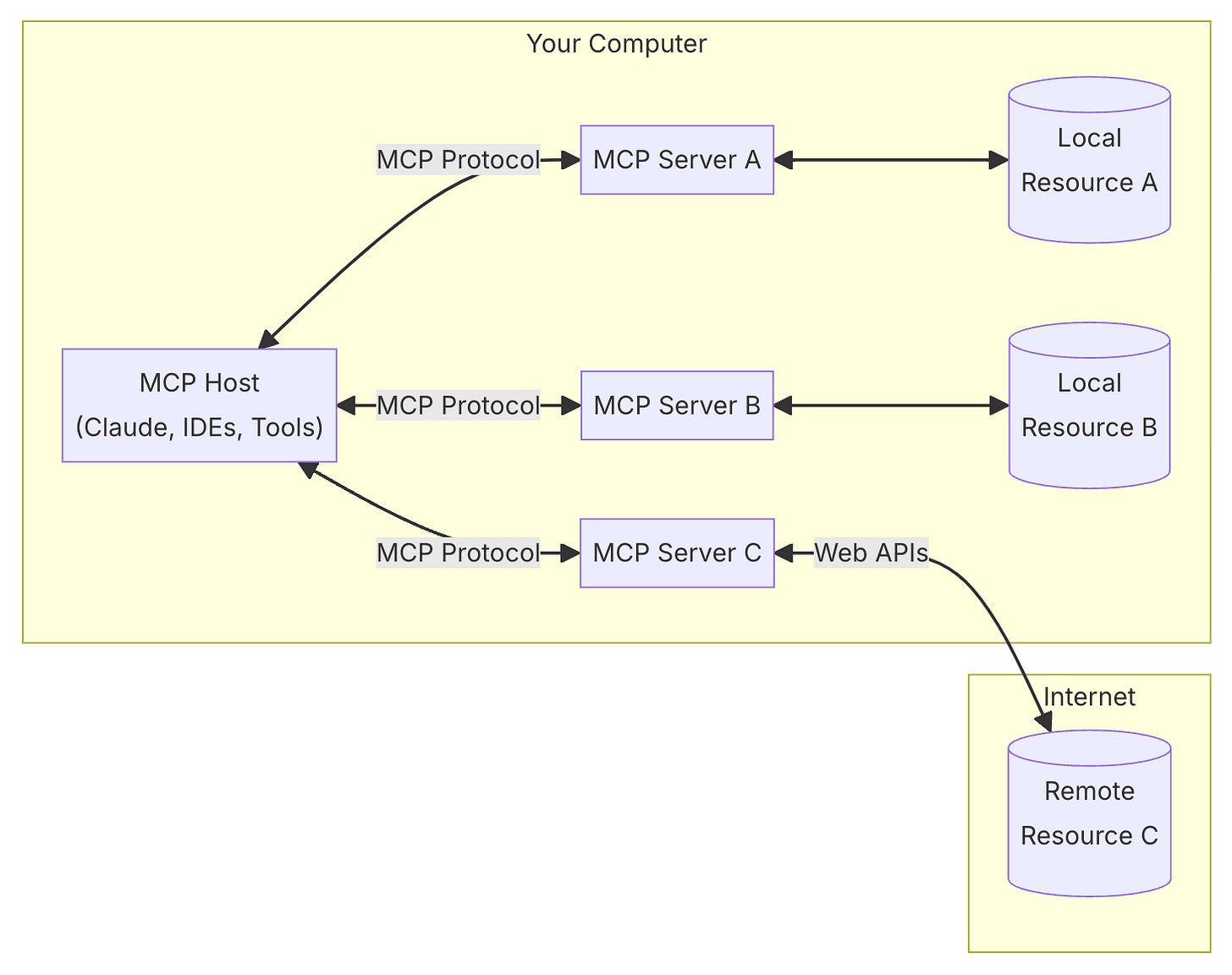Making AI Conversations Smarter with Model Context Protocol
Hey there!
When large language models first hit the scene, interacting with them was… clunky, to say the least. Remember having to copy and paste code into a text box just to get them to respond? Yeah, it worked, but barely.
Developers quickly realized that this wasn’t cutting it. Custom integrations popped up to improve how context was handled, but they were all over the place—each tool or app had its own system, which made everything fragmented and time-consuming to build.
Enter the Model Context Protocol (MCP): a simple, universal solution to make AI interactions smoother, more efficient, and way less of a headache for developers.
The Problem MCP Solves
Here’s the deal: when working with AI, you often need it to interact with local and remote resources—think databases, APIs, or even just the ongoing chat history.
Back in the day, you had to create custom pipelines to load this context into the model. Every project needed its own unique setup, and there was no standard way of doing it. This led to:
• Extra Work: Rebuilding the wheel for every project.
• Fragmentation: Every app did things differently, making collaboration tricky.
• Inconsistent Results: Custom systems often didn’t work as well as they should.
MCP fixes this by introducing a universal protocol that works across applications, making it easier to manage and load context efficiently.
What is the Model Context Protocol?
At its core, MCP is a standardized way to handle context when working with large language models. Whether your resources are local (files, user inputs) or remote (APIs, cloud databases), MCP ensures the AI model has everything it needs to function properly.
Here’s what it brings to the table:
1. Universal Integration: One protocol to handle context across all your applications.
2. Efficient Context Management: Load only the relevant information, keeping interactions streamlined.
3. Seamless AI Interaction: Simplifies how your app communicates with the AI, whether it’s pulling data from a local file or querying a cloud API.
Why MCP is a Game-Changer
MCP isn’t just about making life easier for developers (though it does). It’s also about improving the overall user experience. Here’s why it stands out:
1. No More Reinventing the Wheel
With MCP, you don’t need to build custom pipelines for every project. It’s a plug-and-play solution that just works.
2. Better Resource Access
Need your AI to pull data from a file on the user’s computer and query a remote database? MCP handles it all seamlessly.
3. Consistency Across Apps
Because it’s a universal protocol, MCP ensures consistent behavior no matter where or how you’re using it.
4. Focus on What Matters
Developers can spend more time building features and less time wrestling with context-loading issues.
How MCP Works
Here’s a quick overview of how MCP simplifies AI interactions:
1. Define the Context
Start by deciding what information the AI needs—this could be user inputs, files, or API responses. MCP makes it easy to structure and package this context.
2. Load the Context
Use MCP to send this context to the AI model. Whether the resource is local or remote, the protocol handles the specifics.
3. Dynamic Updates
As new information becomes available (e.g., the user provides additional input), MCP lets you update the context in real time without skipping a beat.
A Practical Example
Let’s say you’re building a code assistant. Here’s how MCP helps:
• Without MCP: You’d need to create custom code to load files, process user inputs, and pull API data, then send it to the model in a format it understands.
• With MCP: You define the context (e.g., the file paths and user input), and MCP takes care of the rest—no need to rebuild the same pipelines for every project.
Getting Started with MCP
If this sounds like something you need (and let’s be real, it probably is), the MCP Quickstart Guide is a great place to begin. It walks you through:
• Installing the MCP library.
• Setting up your first context object.
• Sending and updating context with simple API calls.
Final Thoughts
The Model Context Protocol solves a real problem for developers: making AI smarter and easier to work with by standardizing how context is managed. It cuts out the messy, repetitive work of building custom solutions and lets you focus on what you do best—building great applications.
If you’re working with large language models, MCP is worth checking out. Your future self (and your users) will thank you.
Happy coding! 😊


